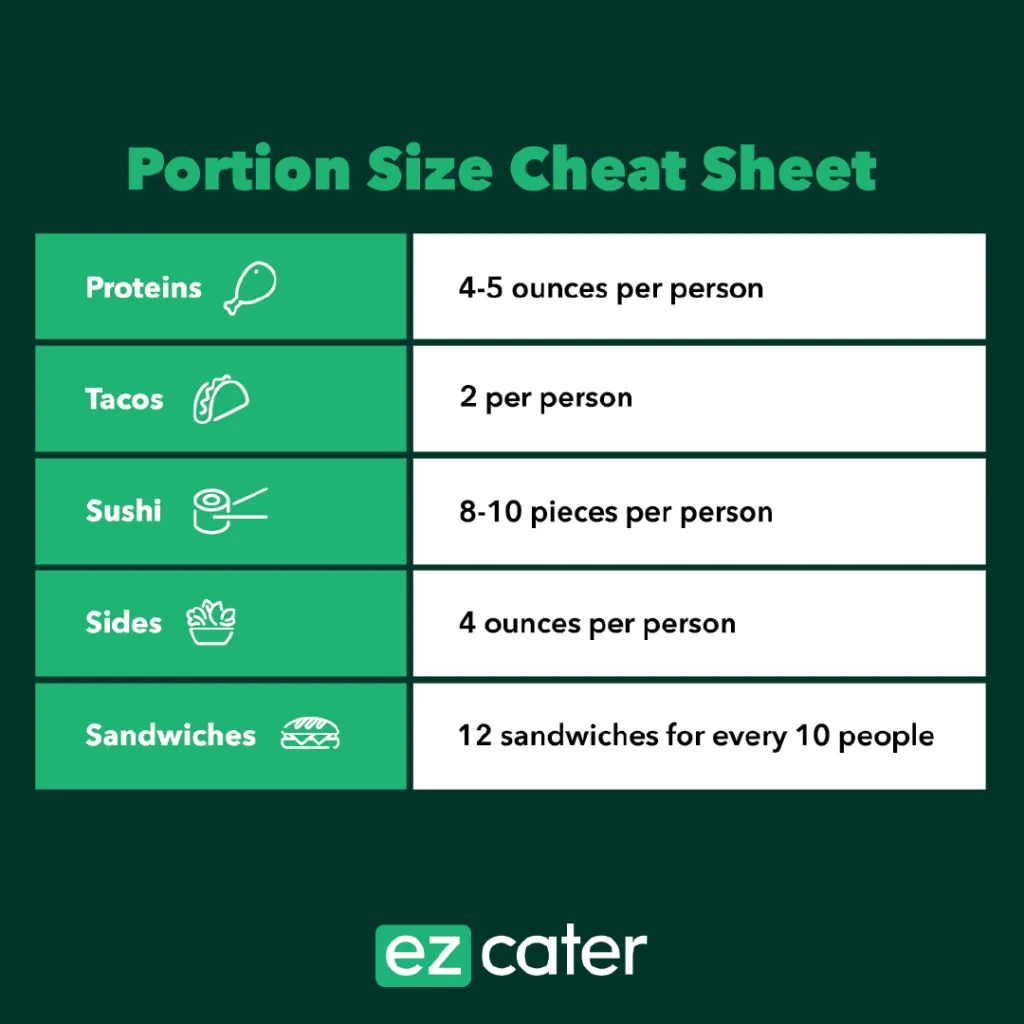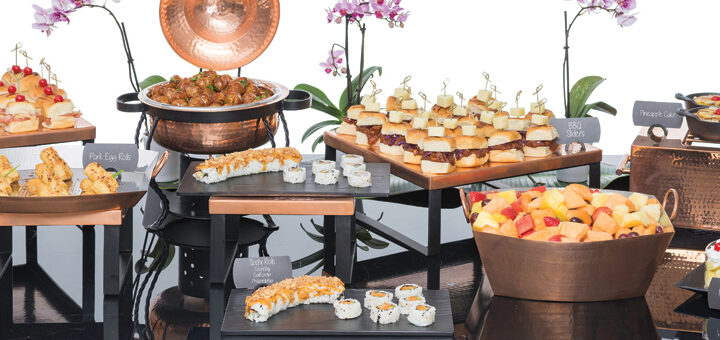Ordering catered food can be tough, especially when you’re planning for a large group. You want to select a variety, and you also want to be sure that you have enough sides and entrees for everyone present. At the same time, you don’t want to buy so much that there’s a large amount of excess.
It’s normal to ask yourself what options would be best. How do you calculate catering per person with a smaller group? What about a group of 100 or more? You want your vegetarian or vegan guests to be just as comfortable as the others — is there a difference in what you should order?
One thing to consider is the number of catering lines you offer for a buffet.
- 1 Line for every 75 people
- 1 Doubleside line for every 150 people
Example: 300 guests
- 4 lines or 2 double sided buffets
Fortunately, the following tips and tricks provided by EZ Cater can really help you make the right decisions on how much to order and help you get the right amount of food every time.
How do you calculate catering per person?
To calculate how much catered food for a party, you first have to break down the foods you want to order into serving sizes.
- Pulled pork and brisket: 4 to 5 ounces per person
- Side dishes: 4 ounces per person
- Sushi: 8 to 10 pieces per person
- Tacos: 2 per person
- Burritos: 1 per person
- Sandwiches: 12 sandwiches for every 12 people
- Skewers and kebabs: 2 per person
- Fried chicken: 3 pieces per person

The reason you want to look at a chart like this when you cater food for a party is because everyone’s idea of a serving size is different. With these standardized serving sizes, you know what’s normal when a dish is catered and have the benefit of not having to second-guess how much food is coming.
Considerations when selecting catering portions
Some things to keep in mind when selecting catering portions include the:
- Kind of event
- Duration of the event
- Type of cuisine
Each of these plays a role in what you have to order.
What type of event is it?
The first question is, “What kind of event is it?” For a seated lunch, you may not need as much as for a formal dinner. Social event guests who mingle with others might also eat more.
A good catering portion is one that considers the average breakfast, lunch, or dinner size. For most, that serving size is one entree, two sides, and a selection of beverages.
How long is the event?
The next thing to ask is how long the event is. A short catered meeting, 30 minutes or less, likely needs fewer items than a long lunch event. Generally speaking, events that last for three hours or longer may need to have enough food for seconds or thirds. For shorter events, a single serving may be enough.
To account for longer events, consider bumping up the size of each catered dish so there’s enough to go around.
What type of cuisine is served?
The kind of cuisine served at an event impacts how full people feel. Vegetarian dishes aren’t as filling, so a greater volume is needed to make sure everyone is fed. For example, a salad that’s part of an all-vegetarian dinner should be larger than normal and at least five to six ounces per person.
For other kinds of dishes, like Mexican or Italian, know that they’re likely to fill up guests more quickly. As a result, you may not need as many sides to go with them.
In any case, you do need to make sure each person has enough food. Err on the side of caution and start with one entree before adding side dish options. Consider the main entree and what you can put with it to make it more filling. For example, pulled pork may go well with cornbread, coleslaw, and a dessert, or you might want to select chips and dips for a side for a burrito entree.
Other Resources
Planning


